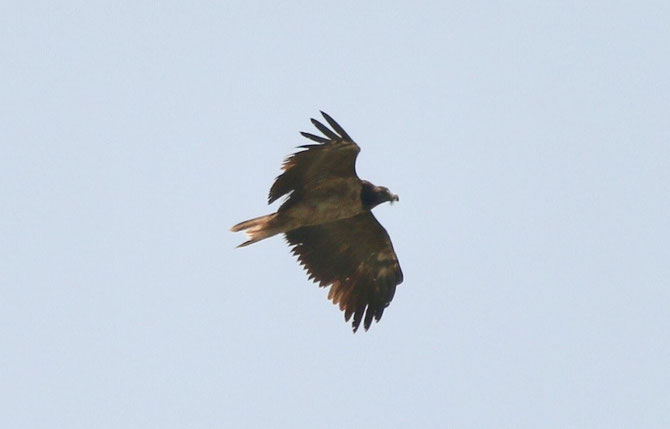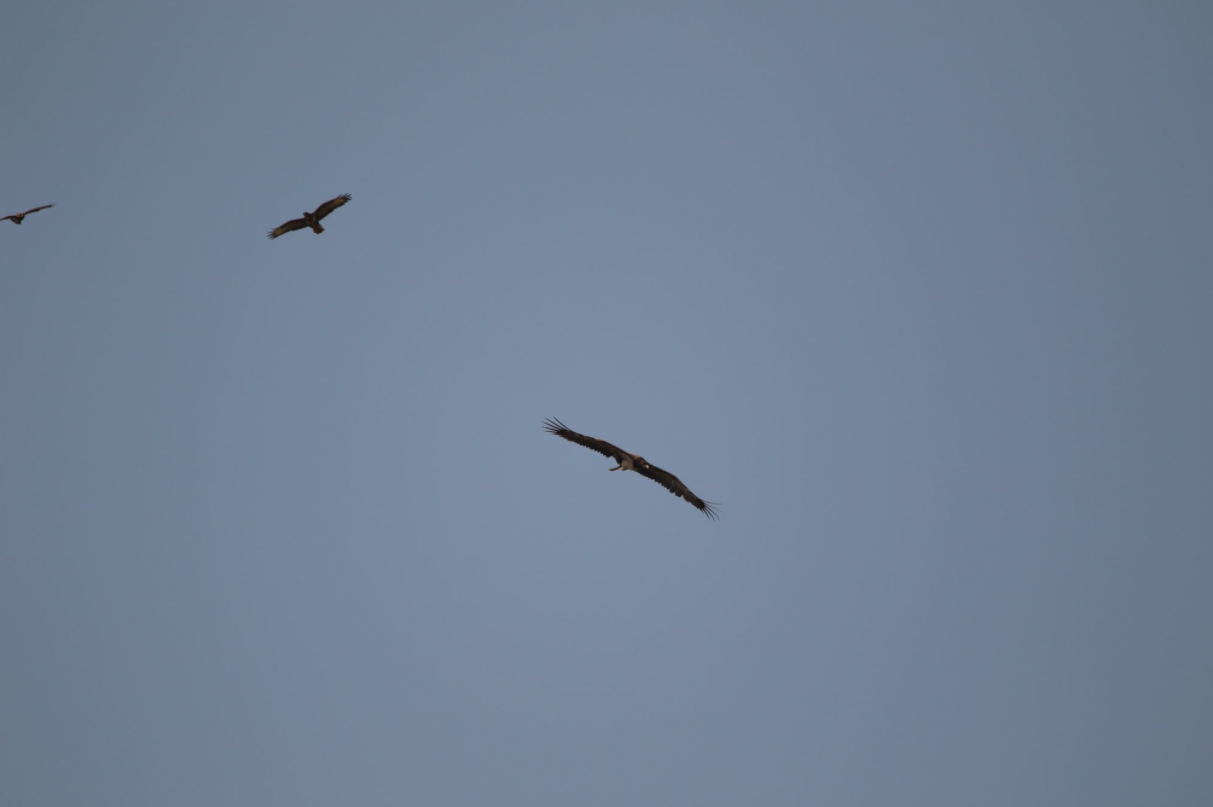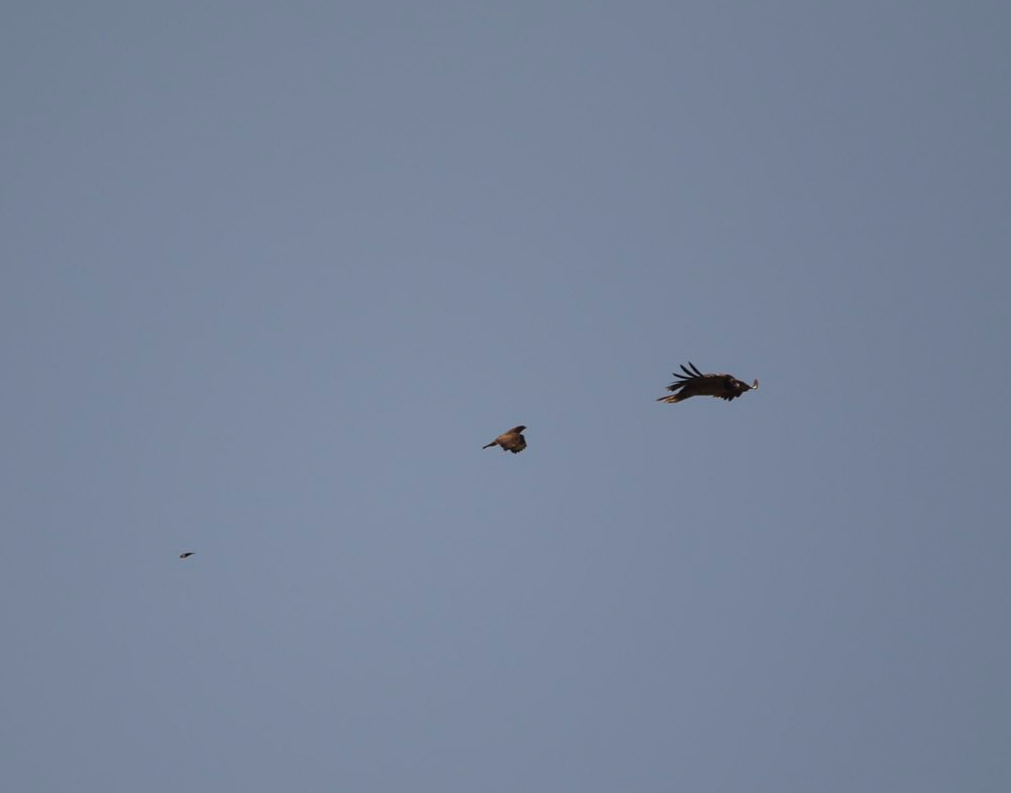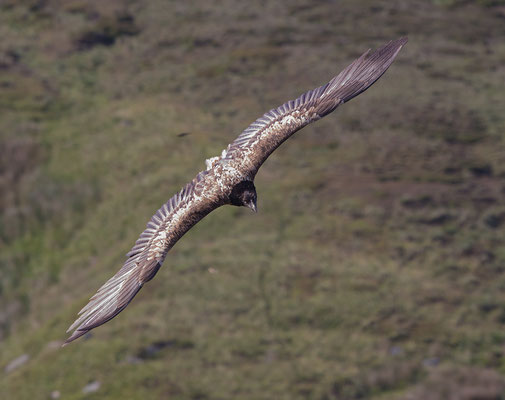
Another young Bearded Vulture travelled vast distances and explored new areas! Bearded Vulture vagrancy usually occurs during late spring and early summer, when young individuals leave their mountain habitats and disperse, sometimes even breaking records like the time an individual visited the UK, which was the first-ever record of the species there. And now, another young individual visited the UK, making it the second record there.
Bearded Vulture wanderer in the UK
Before visiting the UK, this young Bearded Vulture wanderer was observed in other corners of Europe. The bird visited the Netherlands two weeks ago and moved to Belgium one week ago. Then, it was photographed in Kenilworth, England, on 25 June by Lucy Burrell and was heading north, making it the second-ever record of a Bearded Vulture in the country. Due to its missing feathers and damaged tail, it was confirmed that it is the same individual. The bird also passed by the house of the VCF’s UK-based staff member! Our Research Officer, Louis Phipps, was not so lucky to see the bird, but his brother did. Louis notes that if the bird continues heading north, it could be a beneficial move as there are larger national parks with extensive grazing and deer populations that could provide a good source of food.
This is a second calendar year Bearded Vulture, meaning that it hatched in 2019. It does not have any ring or markings, suggesting it could be a wild-hatched bird, which could come from the Alps or the Pyrenees. All released birds in the reintroduction projects managed by the VCF are ringed and also equipped with a tracking tag. They also get some of their wing-feathers bleached to identify them in flight, which should still be visible at this age.
Update 01/07/2020
The young Bearded Vulture was sighted again! It is continuing heading north from the Midlands and was photographed on 30 June 2020 at the Edale Valley, Derbyshire! Keep an eye out and let us know if you spot this young individual.

Update 07/07/2020
Birders were searching Goyt Valley during 4-5 July as there were reports that the Bearded Vulture was seen there, but they found no trace of it. The trail went cold again until 6 July when Wendy Birks filmed it in flight over Cressbrook Dale. It was then seen over Froggatt Edge, heading north for Stanage Edge. Then, it was observed in the Big Moor area on 7 July and was later seen over Gardom’s Edge, east of Baslow. It seems that is quite settled in Derbyshire for the time being. BirdGuides put together a guide on where it may be best for any Midlands birders to try and see this wandering Bearded Vulture.
Update 13/07/2020
After exploring Derbyshire, it seems that the Bearded Vulture moved to Yorkshire. It appears that it flew over the city of Sheffield, with many residents reporting sightings around 10 July. On 12 July, Will Bowell photographed the bird at Howden Moors just outside Sheffield.
Why do Bearded Vultures wander around?
Bearded Vultures live in the mountainous regions of Europe, Asia and Africa. There they find the perfect conditions for flying, steep walls for breeding and open landscapes to search for food. In this case, the young Bearded Vulture either came from the Alps or the Pyrenees. We can only find out if they are marked or if we acquire a feather or a blood sample for analysis.
It is normal for Bearded Vultures to travel vast distances and explore new areas. For example, a recent study in the Pyrenees estimates that young individuals have a range of up to 10,000 km². Throughout the years, we have observed immature Bearded Vultures dispersing from the mountains every year, usually in spring, both released and wild-hatched birds.
The first dispersal movements of Bearded Vultures start in spring from their second calendar year. Typically, after some days or weeks they return to their mountainous habitats, but sometimes they need to be rescued, like in the case of Bearded Vulture Schils. Some special observations could be made from birds released in Andalusia in southern of Spain where individuals have dispersed more than once. For example, Bearded Vulture Tono from Andalusia flew four consecutive years to the Pyrenees and remained there from spring until autumn. These dispersal movements probably serve to establish connections with other populations. Other possibilities include that young individuals follow other migrating birds and are aided by strong winds, but we do not know precisely why. In the case of Alpine Bearded Vultures, but also birds from Andalusia, most of the dispersion occurs to the north, which is also puzzling.
We hope that the bird will find food and return to its mountainous habitat safely.
This year, we also reported on a couple of more Bearded Vultures that left the mountains and travelled north to France.
Sign up to our monthly newsletter and stay updated with Europe’s vultures!









